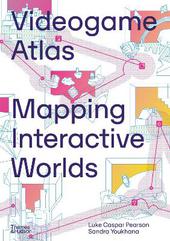
|
Videogame Atlas: Mapping Interactive Worlds
Hardback
Main Details
| Title |
Videogame Atlas: Mapping Interactive Worlds
|
| Authors and Contributors |
By (author) Luke Caspar Pearson
|
|
By (author) Sandra Youkhana
|
|
Foreword by Marie Foulston
|
| Physical Properties |
| Format:Hardback | | Pages:288 | | Dimensions(mm): Height 340,Width 240 |
|
| Category/Genre | The arts -miscellaneous
Architectural structure and design |
|---|
| ISBN/Barcode |
9780500024232
|
| Classifications | Dewey:794.8 |
|---|
| Audience | |
|---|
| Illustrations |
484 Illustrations, color; 484 Illustrations, color
|
|
Publishing Details |
| Publisher |
Thames & Hudson Ltd
|
| Imprint |
Thames & Hudson Ltd
|
| Publication Date |
15 November 2022 |
| Publication Country |
United Kingdom
|
Description
A dazzling look at modern videogame worlds seen through an architectural lens, utilizing maps, diagrams and graphic illustrations to offer new perspectives on the art of virtual world building. Videogame Atlas presents a journey through twelve well-known videogame worlds via panoramic maps, intricate exploded diagrams and detailed illustrations. The book offers a playful new way of seeing these beloved virtual worlds using the practices and academic rigour that underpins real-world architectural theory. Titles such as Minecraft, Assassin's Creed Unity and Final Fantasy VII are explored in exhaustive detail through over 200 detailed illustrations of the micro and macro, each with supporting commentary and architectural theory. Taking influence from high-end architectural monographs, the book is carefully designed to the smallest of details and its production is intricately executed. This book, printed in five colours, with neon ink throughout, is a culmination of Luke and Sandra's work, which includes founding the Videogame Urbanism studio at the Bartlett School of Architecture, UCL that promotes the use of game technologies in architectural education.
Author Biography
Sandra Youkhana and Luke Caspar Pearson are architectural designers who run their own studio, You + Pea. Their work explores the integration of videogame technologies into architectural design, leading conversations on how games can engage new participants in the design of cities.
|